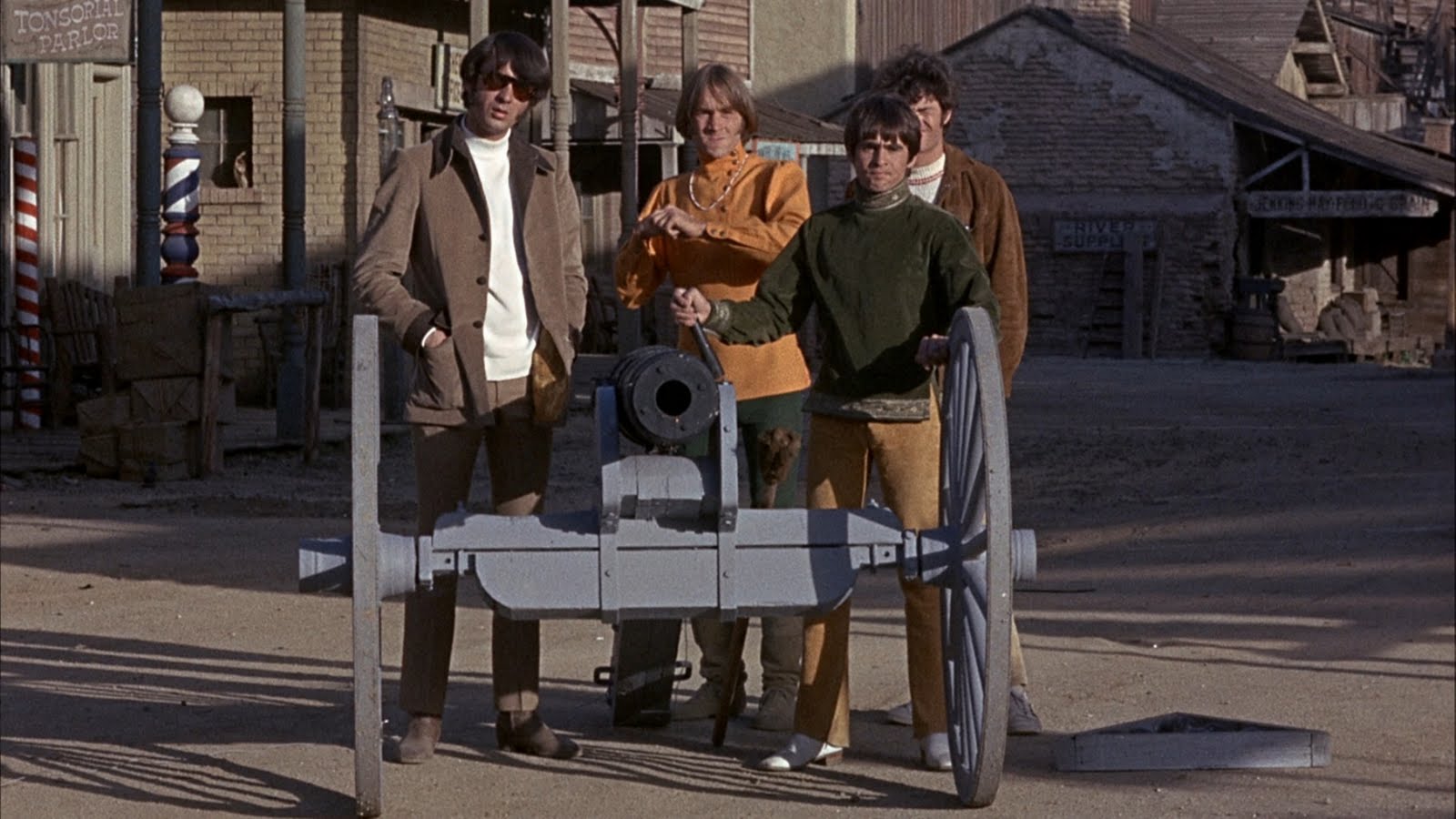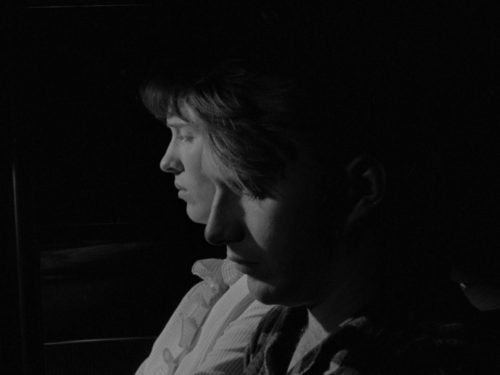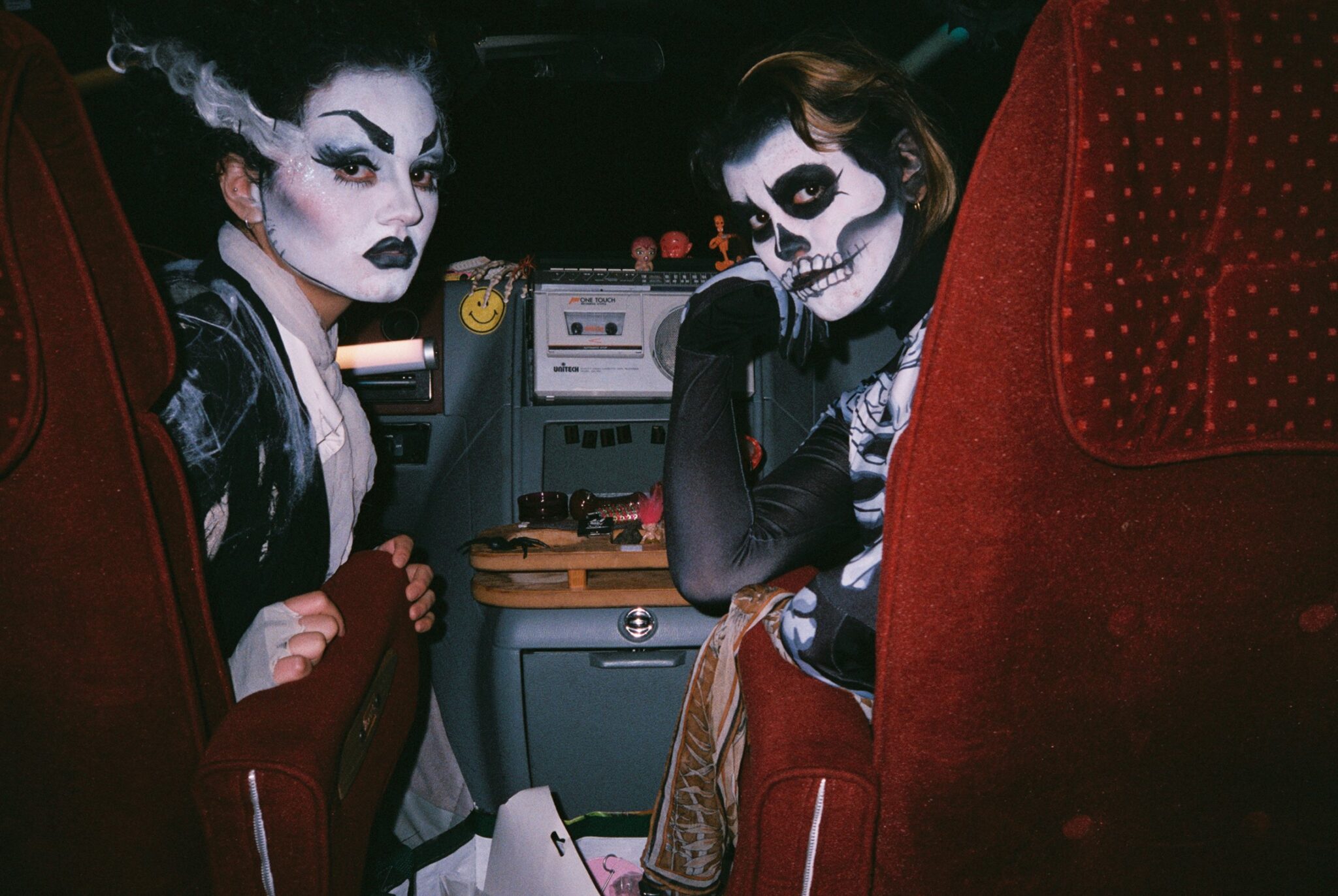In their first and only film, The Monkees aimed to break out of their made-for-TV personas and ended up calling the entirety of reality into question
We hope you like our story
Although there isn’t one
That is to say, there’s many
That way there is more fun
A single chord, four boys running down the street chased by a horde of adoring fans, smiles and laughs abound. The opening scene of 1964’s A Hard Day’s Night is one of the most instantly recognizable in film and an instant representation of the insanity that was Beatlemania. Just four years later, The Monkees would play the scene in a far darker way: a ribbon ripping, four men running down a bridge casting fevered glances behind, looks of sheer terror on every face. Where the Beatles revel in the hijinks of the chase, the Monkees are running for their lives. Micky Dolenz chooses to jump off a bridge rather than meet what seems to be a grim fate at the hand of their angry mob. In the water he’s saved by mermaids as the mesmerizing “Porpoise Song” introduces the film with a hypnotic color palette. Bizarre and surreal, The Monkees’ 1968 film Head was a box office failure upon its release. In the years since, it has come to be regarded as a cult favorite. The qualities that make Head such a strange and rewarding experience are the same ones that initially turned fans off. The Monkees made a name for themselves with their fun and charming television show and an enduring run of classic singles and hit records. Head was something else: a no-holds-barred critique of fame and perception. In many ways, Head was The Monkees’ proverbial biting of the hand that fed them. But in the film they don’t just bite it — they tear it clean off.
In a 2012 interview with Rolling Stone, Michael Nesmith explained that the band was feeling ostracized by fans and critics when they began production on the film and referred to Head as their “swan song.” To understand why The Monkees found such a savage satire the appropriate means to announce to the world that they would no longer play their made-for-TV roles, one must go back to 1965 when a young Screen Gems television producer named Bob Rafelson met another producer, Bert Schneider. The two immediately hit it off and formed Raybert Productions, which would later become Columbia subsidiary BBS Productions. The first project Rafelson and Schneider began work on was a television series about a band, an idea Rafelson originated in 1962 and based on his own chaotic experiences in a band. “I had conceived the show before The Beatles existed,” Rafelson would later say, citing that his experiences that inspired the show took place before A Hard Day’s Night hit theaters and officially sent the world into Beatlemania. After successfully selling the idea to Screen Gems, Raybert Productions set about creating their show. They initially tried to cast an existing group, but after failing to secure bands like The Lovin’ Spoonful or The Dave Clark Five, Rafelson and Schneider decided they would create one. They placed ads in Daily Variety and The Hollywood Reporter that ran September 8-10, 1965, asking for “4 insane boys” with “courage to work,” and promising madness. After sitting through 437 applications, Rafelson and Schneider had their band. They had created The Monkees. In watching the auditions of all four future Monkees, Rafelson, interacting off-camera, seems to know what he has. He is masterminding this with such a clear vision that as soon as he finds Davy Jones, Micky Dolenz, Nesmith, and Peter Tork, he knows where they fit into The Monkees. Flash forward through three years, nearly 60 episodes, smashing popular success, and an Emmy award, and there is Head, the group’s first foray into filmmaking.
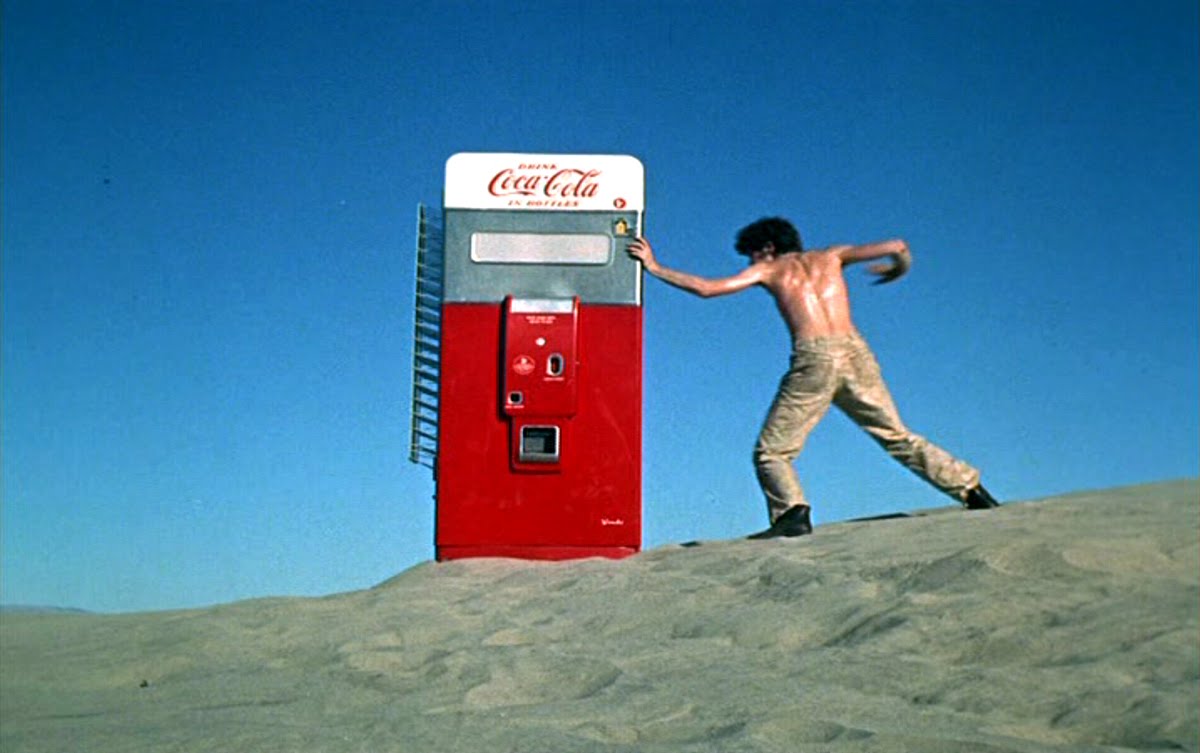
The general plot and key scenes of Head were developed over a weekend in Harry Dean Stanton’s basement in California by Rafelson, co-producer Jack Nicholson, The Monkees, and supposedly a decent supply of marijuana. LSD played a part as well, as Nicholson envisioned the film taking on the feeling of an acid trip. Rafelson later said it was great fun to imagine the film, but the drug use made it very difficult to write down any of the ideas, leaving them to rely on recordings of their planning sessions. Nicholson then took the tapes recorded from those sessions and used them in compiling the screenplay, which would become a key point of contention between Rafelson and the band. The band had originally been under the impression they would direct themselves (by that point, both Tork and Dolenz had directed episodes of the show). When they learned the film would be Rafelson’s feature film debut and that they wouldn’t even be paid for their contributions to the screenplay, Dolenz, Jones, and Nesmith staged a walkout. Tork was the only Monkee to appear on set for the first day of filming, and the strike ended after the first day only by virtue of Columbia agreeing to give the group a larger percentage of the film’s net profits. However, the damage was done, and this conflict would operatively end the professional relationship between Rafelson and the band he engineered. On its surface, Head reads as The Monkees casting off their chains and the industry that created them, but in the context of their relationship with Rafelson, this theme becomes even more pointed. As director and producer of the movie, Rafelson becomes an accomplice in the rampage of his own Frankenstein’s monster. As The Monkees tear down the facades around them in Head, Bob Rafelson is inseparable from their destruction; he created them, and when they took on a life of their own, he gave them the vessel through which they could deliver their final blow.
Told as a series of loosely connected vignettes, it is easy to mistake the plotlessness of Head for meaninglessness; however, that could not be further from the truth. Head has the latitude to make the statements it must make because of its plotnessness. A large portion of the film is set on a studio backlot, with scenes taking place across various types of productions: A Western, an Annette Funicello teen romance, a war epic, a vacuum cleaner advertisement. “There was a style for each and every one of the movies that are in the movie because I didn’t think I would ever get a chance to make a second movie,” Rafelson later said, “so I was going to put all the movies I ever dreamed [of making in the film.] And within those movies, we’re making some kind of commentary beyond the homage.” The entire film centers around notions of reality and various forms of false or artificial existence. In fact, there is even a scene in which Peter and a Swami (played by Abraham Isaac Sofaer) explicitly lay this out for the audience. For most of the film, the viewer is unsure of what is “real” or part of some imagined reality. Just when you think you have it figured out, the film pulls in the opposite direction. Head doesn’t just subvert expectations; it calls the entirety of reality into question.
For a band that was often accused of not playing their own instruments, this was a drastic departure from the artificial image they were saddled with. Their desire to challenge audiences’ perceptions of who they were as musicians and Monkees is most explicit in their presentation of “Circle Sky.” The sequence is perhaps the film’s greatest rebuttal to the claims that they were not real musicians or artists. Staged as a live concert performance in-the-round, the sound of thousands of girls screaming is ever-present, and Rafelson cuts erratically between the band and the predominantly young, female audience. However, something else begins to happen: Clips of suffering Vietnamese civilians are juxtaposed over the screaming audience members. As the frenzy builds, the girls storm the stage and begin tearing into the band — but the members are revealed to be only mannequins. Were they real? Were the screams those of concert-going young girls, or women and children caught in the crossfire of war? Under Rafelson’s guiding hand, the television show is noted for being experimental in its use of fourth-wall breaks, especially in the form of Rafelson-conducted interviews with the four Monkees at the end of episodes, and the inclusion of documentary footage. Rafelson even took this as far as frequently using directors with no prior directing experience for the show’s episodes, but he takes all of this inventiveness and ups the ante in a much darker way in Head. The experimentation borders on confrontation; the edge is no longer purely for entertainment.
The band’s commentary on the Vietnam War is another of the broader concerns of Head. Amid the questioning of reality, they create one of the most compelling anti-war statements to come out of the film industry during the Vietnam era. One of the earliest vignettes in the film is a satire of war movies, something The Monkees could only get away with in this movie when they were already ostracized anyway, as Nesmith explained. It serves as a grim reminder of what was happening overseas while The Monkees were getting themselves caught up in innocent hijinks every week on primetime. Head even plays the famed clip of the execution of a Vietnamese citizen in the street in unedited form multiple times throughout the film. That must have been quite the shock to movie-going Monkees fans in 1968.
Related: Harry Nilsson’s ‘Aerial Ballet’ Is An Under-Appreciated Masterpiece by Craig Wright
The most pervasive theme in Head, however, is the forthright, unfiltered commentary on fame and the band’s clear distaste for it. Head opens with the “Ditty Diego (War Chant).” Starting with the line “Hey, hey, we are The Monkees,” the chant makes it immediately clear that something much darker is going on here than the expected monkeying around as they call back to the familiar, self-referential hook from their TV theme. Referring to themselves as manufactured images with no philosophies, The Monkees address their identity as a creation — a made-for-TV group. Ironically, these moments where they lean most aggressively into critiques of their “Pre-fab Four” personalities, which they so desperately fought for so long, are the moments when they appear the most “real.” In a later scene, Micky Dolenz asks a clearly dissatisfied Mike Nesmith, “How does it feel to be a millionaire at 25?” It seems as if The Monkees answer their own question, with an older gentleman later saying, “The tragedy of your time, my friends, is that you may get exactly what you want.” If Head is any indication, the men behind The Monkees are pop idols who are worn out by the fame and success that most of the world covets. What’s left but disillusionment?
Part of rebelling against their fame was breaking free of the characters they were forced to play. Peter, the most erudite and spiritual of the bunch in real life, has a devastating moment where he tells Micky, “I’m the dummy. I’m always the dummy,” with Micky replying, “You’re always the dummy Pete, I’m sorry.” It is a painfully self-aware moment where Peter has to reckon with this persona he had to create and publicly maintain as the “dumb” one when he was so incredibly intellectual. In a scene where Peter has to punch a woman, Rafelson frames it as shooting the film itself. Peter immediately turns to the director and crew (played by Rafelson, Jack Nicholson, and Dennis Hopper in his Easy Rider costume) after he calls cut and protests against having to perform violent acts both for the sake of his own philosophy, his image, and for the children that make up most of their audience. During a sequence on a Western backlot set, Micky stops halfway through the scene and turns to the camera, addressing Rafelson himself, to tell him he doesn’t want to do any of this anymore — he doesn’t want to participate in all of this fake reality, doesn’t want to be this character. It is startling how ardently and directly the four Monkees disavow their fame and personas. There is a liberation that comes with them being able to say these things. Yet, even then, perhaps they are still not free.
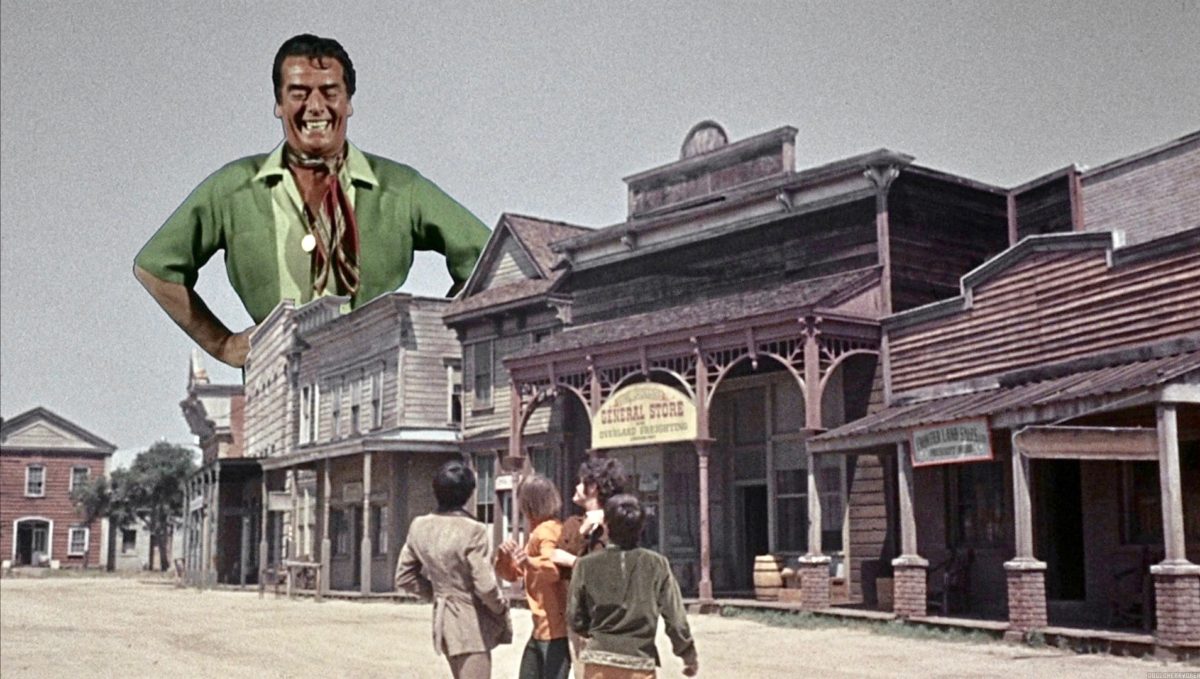
Another motif throughout Head involves The Monkees being trapped. Through most of the sketches, they are running from someone or some army, or are physically trapped inside a steel box or as dandruff. In fact, it is later revealed that for the entire movie, they have been trapped in the hair of the debonair classic Hollywood actor Victor Mature, an idea that came from Rafelson attempting to imagine “the darkest thing on the planet” during the writing session. When Nicholson asked what that would be, Rafelson settled on Victor Mature’s hair, saying he embodied Old Hollywood in the “most formidable way.” This entrapment is even how the movie ends. They spend the whole film trying to escape these identities they have had to assume in their fame, but they cannot. In the end, they all jump off the bridge to escape the mob of fans, but “Porpoise Song” kicks in again and the action moves into slow motion, just as the movie started. The Monkees find themselves in a perpetual loop, one which they cannot escape no matter how hard they try. It is a grim message and perhaps the single most damning critique of pop culture in Head.
In his own way, Rafelson was establishing some sense of independence and breaking the mold of the image he had also created for himself in spearheading The Monkees. Along with his fellow pioneers of the New Hollywood, who were challenge norms in filmmaking and the studio system from the inside, Rafelson delivers his own coup de grace by not only challenging, but openly mocking, classic American film traditions and the pop culture industry he made his name in. He felt there was a missing truth from the “Monkees mythology,” what he refers to as the “adult assault on their sensibilities” and their constructed nature. “I thought I should make a movie about that,” he said. “In other words, expose The Monkees and my relationship to The Monkees as truthfully as I possibly could, although in a very abstract manner.” While the film’s broader satire of fame, fortune, entertainment, and the Vietnam War are as savage as anything, the band and their creator aim a great deal of the harshest criticism at themselves.
After all this, it is still hard to know what to make of Head. It is perhaps the most compelling part of their legacy precisely because it is so violently critical of their fame and success. They had a unique fight for identity, and Head is the complete embodiment of that. It is a repudiation of everything that brought them international fame, the supposed dream. It is a rebellion against the people they were forced to become for the world’s entertainment. And yet, in brief shining moments, they finally feel real. By the end, it becomes clear they still felt trapped. Perhaps, however, Head was the final liberation. The band could watch their onscreen personas be taken away as the credits roll and walk out of the theater as free men. And maybe that is all the plot of Head really is — The Monkees putting this to rest for themselves. Perhaps the movie wasn’t for any of us, but instead was the last act they had to perform to shatter a fake reality and to begin something more truthful.
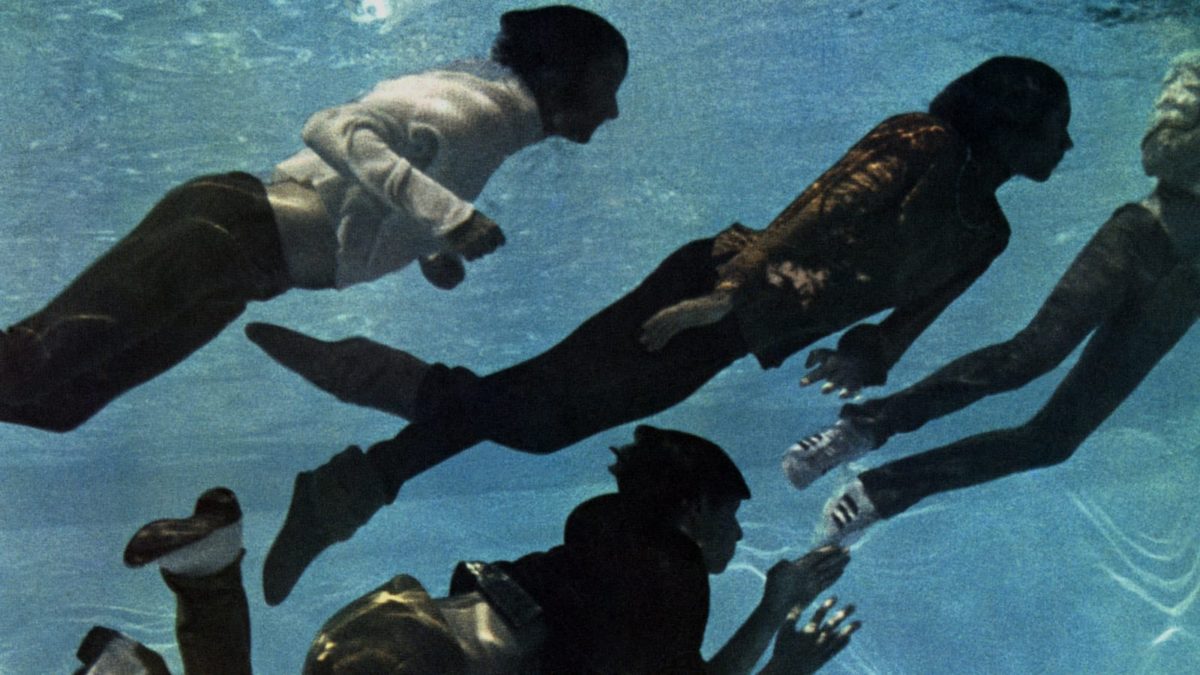
Stay up to date with all things Split Tooth Media and follow Breanna on Twitter
(Split Tooth may earn a commission from purchases made through affiliate links on our site.)

